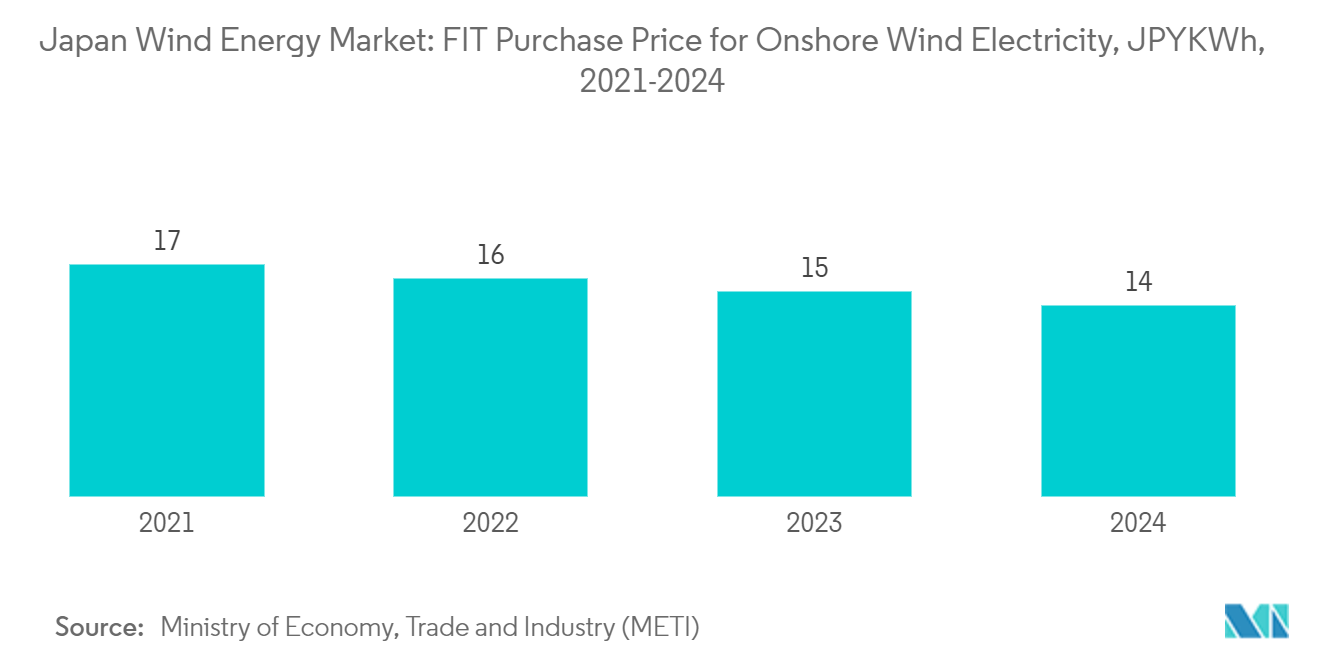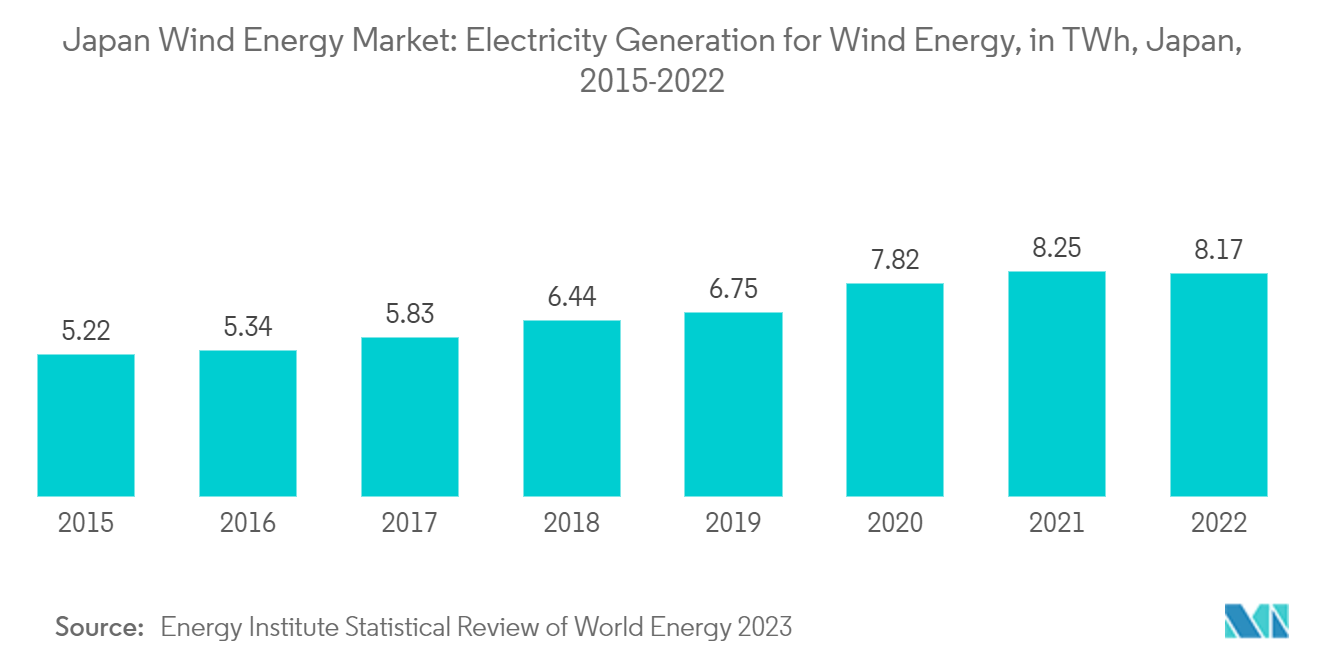Market Trends of Japan Wind Energy Industry
Onshore Segment is Expected to Dominate the Market
- Onshore wind energy is expected to dominate the market during the forecast period. Wind energy has become a major source of support for Japan to reach its net-zero target and decarbonize its heavy industries, such as steel manufacturing and shipping.
- With a new annual installation of 149 MW in 2022, onshore wind energy installed capacity in the country reached 4668 MW in 2022, up from 4523 MW in 2021, driving the onshore wind energy market in the country.
- According to the Ministry of Economy, Trade and Industry (METI), for the fiscal year 2024, the FIT (feed-in tariff (FIT)) purchase price for onshore wind electricity was set at JPY 14 per kilowatt hour. The price has decreased continuously throughout the past decade.
- As of 2022, the country's total installed wind capacity reached 4.8 GW, according to the Global Wind Energy Council (GWEC), and the majority of the new capacity came from onshore wind installations. It is further expected to grow during the forecast period, as several wind power projects are planned in Japan.
- In November 2022, the Ministry of Economy, Trade, and Industry announced plans to begin public auctions for offshore wind generating projects in December 2022 under updated criteria to promote a broader range of operators and speed infrastructure construction. The auction is planned to cover four sites with a combined capacity of 1.8 GWs.
- Moreover, in May 2023, the Government of Japan announced its aim to install 40 GW of onshore wind farms. Also, it is expected to be commissioned in Q2 2023. The Dohoku wind farm cluster, a 339.7 MW wind farm cluster, consists of four projects located on the island of Hokkaido. The complex consists of 79 units of wind turbines.
- Hence, with existing onshore wind energy capacity and upcoming projects, the segment is expected to dominate during the forecast period.

Government Policies and Increasing Investments to Drive the Market
- .Favorable government policies will drive the wind energy market in Japan. The government has launched various government policies and initiatives to support the growth of renewable energy and wind energy deployment in the country. For instance, the Japanese government unveiled its Offshore Wind Industry Vision. This vision outlines a plan to allocate 1 GW of offshore wind capacity annually through 2030.
- Additionally, the government has plans for supply chain development and cost reduction pathways to reach JPY 8-9/kWh of LCOE by 2035 and 30-45 GW of cumulative capacity by 2040.
- According to the Energy Institute Statistical Review of World Energy 2023, electricity generated from wind was 8.2 TWh in 2022, which was increased from 7.8 TWh in 2020. Also, according to the Asia Wind Energy Association, Japan has an estimated wind energy potential of 144 GW for onshore wind and 608 GW of offshore wind capacity.
- Japan's wind energy sector is expected to grow in the near future, owing to government initiatives to transition to cleaner energy sources and continual advancements in renewable technologies. In recent years, the country has established various climate goals in order to reach carbon neutrality.
- Moreover, Several European energy companies are investing in Japan as the country aims to create the world's third-largest offshore wind power fleet by 2040. Further, the government is expected to provide tax incentives to stimulate JPY 1.7 trillion (USD 15.9 billion) in private investment. Such initiatives are expected to have a positive impact on the market studied.
- Furthermore, in September 2022, GE Renewable Energy, an American wind turbine manufacturer division of General Electric, and Green Power Investment collaborated to develop an onshore wind farm in Japan. The wind farm is located in FukauraTown, Nishi Tsugaru District, with an installed capacity of 79.8 MW. As a part of the collaboration, GE will supply 19 units of GE's 4.2-117 onshore wind turbines to the power plant.
- Hence, government support and rising investments in renewable energy are expected to drive the wind energy market growth during the forecast period.


